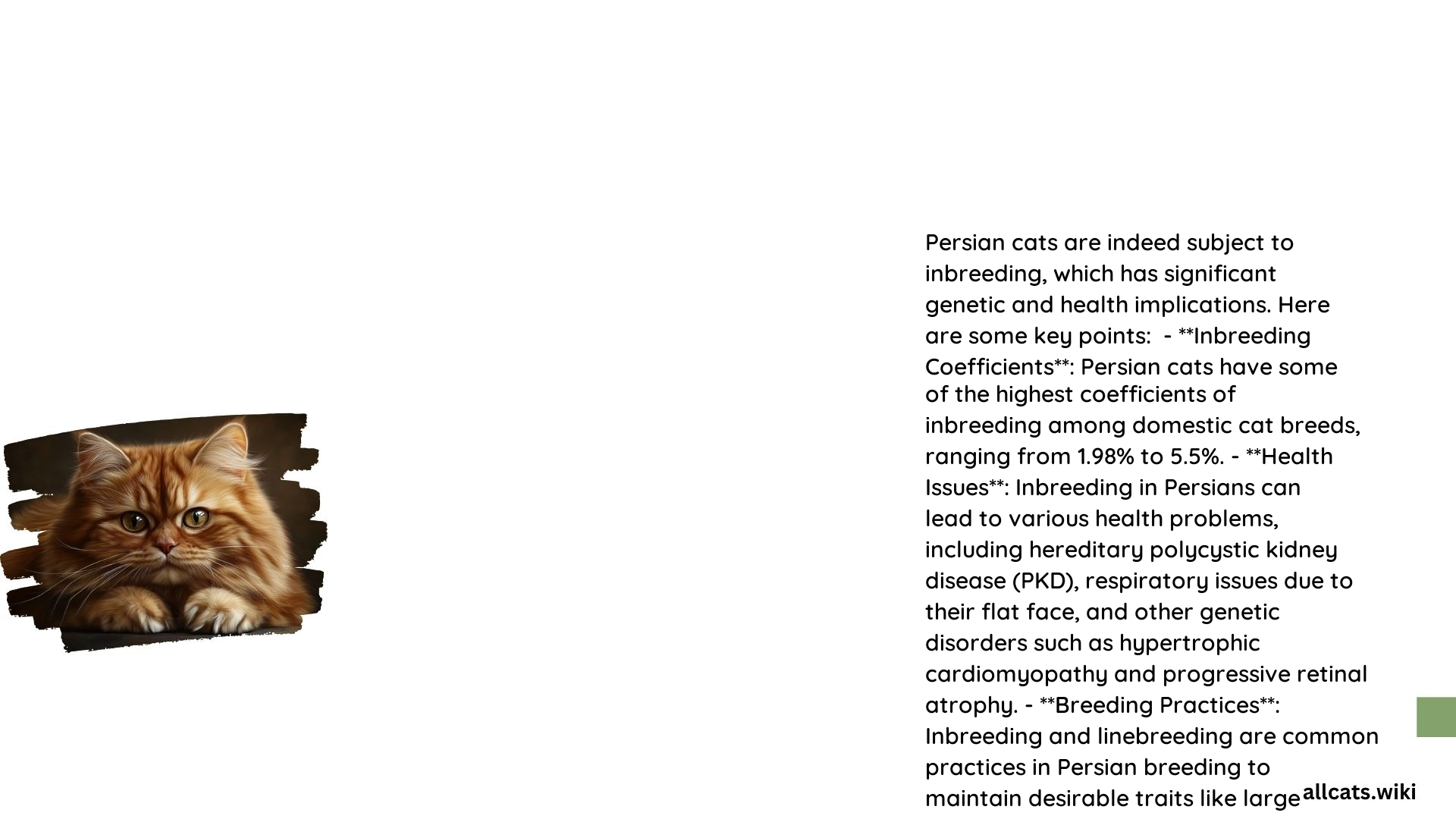Are Persian Cats Inbred?
Yes, Persian cats are often the result of inbreeding practices. Inbreeding is a common method used by breeders to maintain and enhance specific desirable traits, such as the flat face and long, thick coat characteristic of Persian cats.
How Do the Physical Features of Persian Cats Contribute to Their Inbreeding?
The physical features of Persian cats, especially their brachycephalic skull structure, are a direct result of inbreeding. The extreme brachycephaly leads to health issues such as facial irritation, infections, and respiratory problems. Studies have shown that 93% of Persian and Exotic Shorthair cats analyzed had the top of their nose above the lower eyelid, indicating an ultra-type brachycephalic face. Additionally, 83% had excessive tear staining, and 32% had entropion, yet these health issues were often ignored by judges in cat shows.
Is Inbreeding a Common Practice Among Persian Cat Breeders?
Inbreeding is a widespread practice among Persian cat breeders. The cat fancy standards currently encourage the ultra-type brachycephalic features, which necessitate inbreeding to achieve. However, this practice is highly controversial and has led to significant health problems in the breed. Despite the health risks, many breeders continue to prioritize these physical traits over the health and welfare of the cats.
Statistics on Inbreeding Rates and Health Issues
Persian cats are predisposed to at least 29 diseases, many of which are directly linked to their brachycephalic features and inbreeding. Common health issues include respiratory problems, eye infections, and polycystic kidney disease. While specific inbreeding coefficients for Persian cats are not provided, the general practice of inbreeding in cat breeding aims to keep the inbreeding coefficient below 20% to minimize health risks. However, the actual practice often exceeds this threshold, leading to inbreeding depression and associated health issues.
Breeding Practices and Mitigation Efforts
Persian cat breeders often engage in linebreeding, which involves selecting mates based on their relation to a specific ancestor with desirable qualities. This method is technically a form of inbreeding and can lead to a higher inbreeding coefficient. Some breeders and organizations are working to improve the breed by moving away from the ultra-type brachycephalic features. For example, the World Cat Federation has recognized the Traditional Longhair breed, which corresponds to the old-style Persian with fewer health issues. Additionally, genetic testing has been used to reduce the prevalence of certain genetic diseases, such as polycystic kidney disease, from 49% to 2% through targeted selection. However, responsible breeding practices, including genetic testing and selecting for healthier traits, can be more costly and time-consuming, which can be a barrier for some breeders.
In conclusion, Persian cats are often the result of inbreeding practices, particularly due to the selective breeding for extreme physical features like the brachycephalic skull structure. This has led to a range of health issues in the breed, and while some efforts are being made to address these problems, the prevalence of inbreeding remains a significant concern for the welfare of Persian cats.
References
- Persian Cats: Is it too late for the breed? – The Little Carnivore. https://thelittlecarnivore.com/en/blog/persian-cats-is-it-too-late-for-the-breed
- Inbred Cats: Vet-Approved Signs, Ethics, Problems & FAQ – Catster. https://www.catster.com/lifestyle/inbred-cats/
- Feline Fertility Consequences of inbreeding and implications for breeding programs – Journal of Feline Medicine and Surgery. https://journals.sagepub.com/doi/full/10.1177/1098612X221118755

